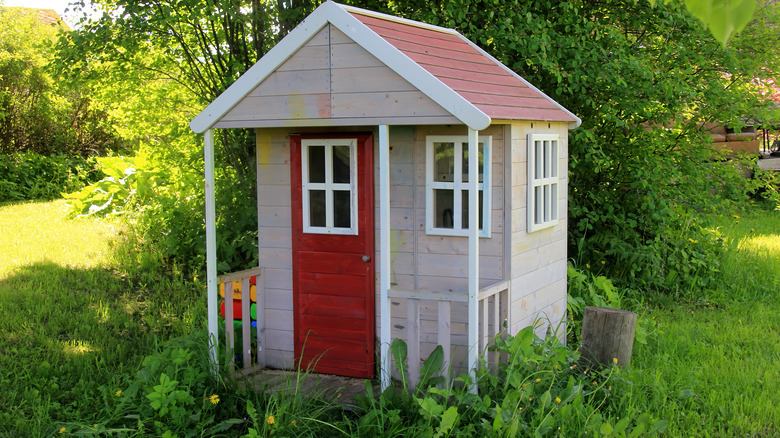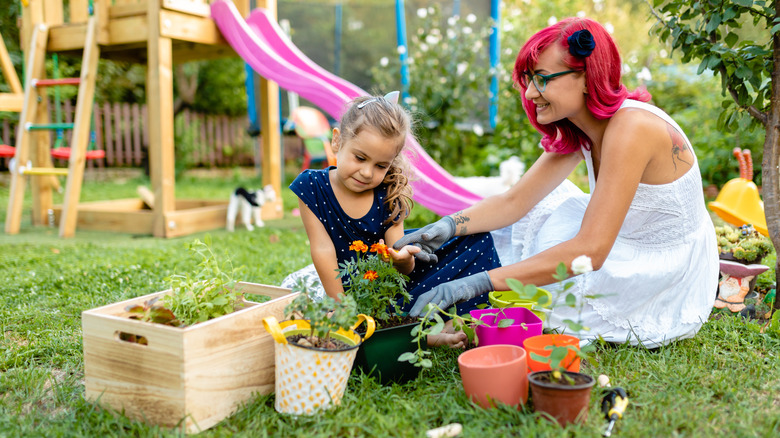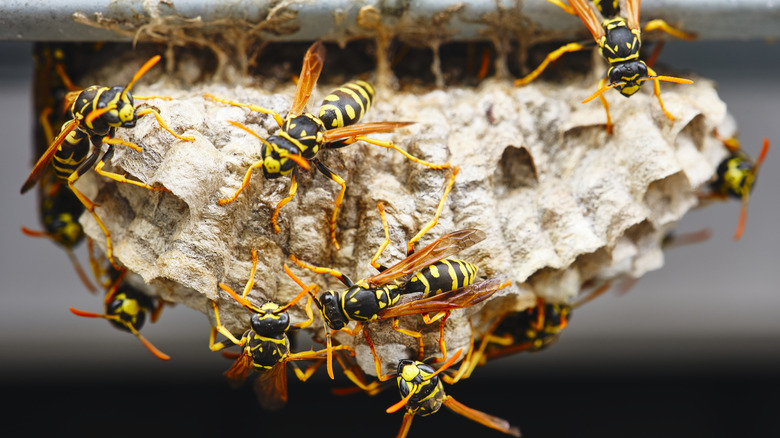Why Wasps Are Attracted To Your Child's Playhouse & How To Deter Them Naturally
Wasps in a playhouse can be particularly frightening for kids (and adults) who are allergic to or afraid of wasps. While it's certainly an inconvenient location for humans, understanding a little bit about wasps' habits and adaptations makes sense of why they gravitate to these sites. Even still, it's annoying at best and dangerous at worst to have a nest share a space with children, so you may be looking for ways to keep these insects and their stingers at a safer distance.
Wasps like areas that are protected from inclement weather and potential predators, and the small corners of tree houses and play structures often fit the bill. There are some easy hacks that work to get rid of wasps, but when you're dealing with a nest in an area where kids are present, preventative measures are key. You want to deter wasps from playhouses to begin with, as well as get rid of any that have moved in already. Here's more on how to repel wasps naturally and why they love playhouses as much as your kids do.
How to deter wasps from playhouses naturally
If you've come across one or two small nests in a playhouse, there are several natural methods for deterring wasps worth trying before buying insecticides or calling an exterminator. It's a different story if you have an extremely large, bustling nest or an infestation, of course. Prior to getting your hands dirty with deterrents, scan the area for any plants, objects, or herbs that attract wasps, and look to find ways of moving or removing them. Plants that wasps like can even be transplanted into an area of your garden or backyard where there aren't playhouses or kids hanging out.
The first trick is to incorporate plants around the playhouse that repel wasps. Some plants that keep wasps away include herbs like peppermint, thyme, eucalyptus, and wormwood. You can also build DIY planter boxes to house these repellant plants on or near your play structure. Essential oils are another method, with one study finding that fragrances like menthol and teaberry worked well to repel wasps. No method is perfect or 100% guaranteed to send wasps flying in the other direction (no one can really predict how each bug will behave), but these are the best natural options backed by science for deterring wasps from playhouses.
Why wasps like kids' playhouses
Wasps are both social and solo flyers, so you may find their nests to be home to just one or a whole group. As mentioned, they choose places for nests that are out of harm's way. The corners and eaves of treehouses, playhouses, and playground structures are quite similar to those of houses and sheds (other spots where you'll likely notice them), so it's easy to see why they choose these secure areas.
Different species of wasps have different styles of nests – for instance, paper wasps create a home that looks like an outward-facing honeycomb. Other wasps and hornets create a round, bulbous nest with a wispy, papery texture on the exterior. Some species won't defend their nest, whereas others will. While many flee the nest after fall, it still may not be comfortable having them around active kids who may accidentally (or intentionally) get too close. A range of other insects build nests, so it's easy to mistake this stinging pest's nest for another bug's. Be sure to properly identify the nest (or get an expert to do so) before you focus on removal and deterrents. Once you've figured out if you have an active wasp nest on your hands, you can start implementing natural deterrents.


